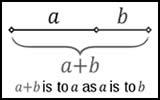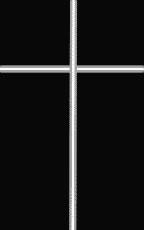April 27, 2015 - The Christian Cross as a Symbol of Perfection
Since my days of research regarding aesthetics and its relationship to math, I have been fascinated with a numerical arrangement called the Fibonacci Series. While this mathematical phenomenon is simpler to generate than to understand, its essence as a reflection of perfection shapes aesthetical as well as mathematical principles and is found also in the physical sciences. It has only been recently, however, that I have recognized that same essence embodied in the shape of the Christian cross.
The Fibonacci numbers are in ascending order, starting with 0 and 1, and continue to infinity; and each ordered number in the Fibonacci Series is a sum of the previous two numbers in the series. So the Fibonacci Series is 0, 1, 1, 2, 3, 5, 8, 13, 21, 34, 55, 89……That may seem to be more of a mind exercise than a special phenomenon until we realize this: the ratio being restated with any pair of adjacent numbers approaches the better-known Golden Mean (phi): 1.61803. The formula which expresses this logic is 
Some would define perfection in simple geometric design, including architecture, in these terms. Given b as 1, then a would be 1.61803. The implied ratio, therefore, is 1 to 1.6 (rounded for simplicity’s sake).
The grey rectangle of the three below uses the ratio 1 to 1.6 for the sides; the other two do not. Which one do you think is more aesthetically appealing (beautiful)?



Whether by plan—as with architecture, from the Parthenon's façade to contemporary buildings; or by artistic choice—works by Leonardo da Vinci (Last Supper, Mona Lisa, Self Portrait); or made by God—a multitude of plant characteristics, the shapes of the human face and ears, the spiral nature of solar systems, the overtone series in music; or even in common every-day design—shapes of postcards, posters, wide-screen televisions, photographs, light switch plates, and cars—application of the Golden Mean often moves the design toward perfection.
With such complex mathematical and aesthetic principles as background information, it may seem much easier, and a rather natural fit, to place the Christian cross within a rectangle suggested by the Golden Mean. It is here that the earlier-described perfection in mathematics and aesthetics may enhance the spiritual perfection of the Christian cross.










